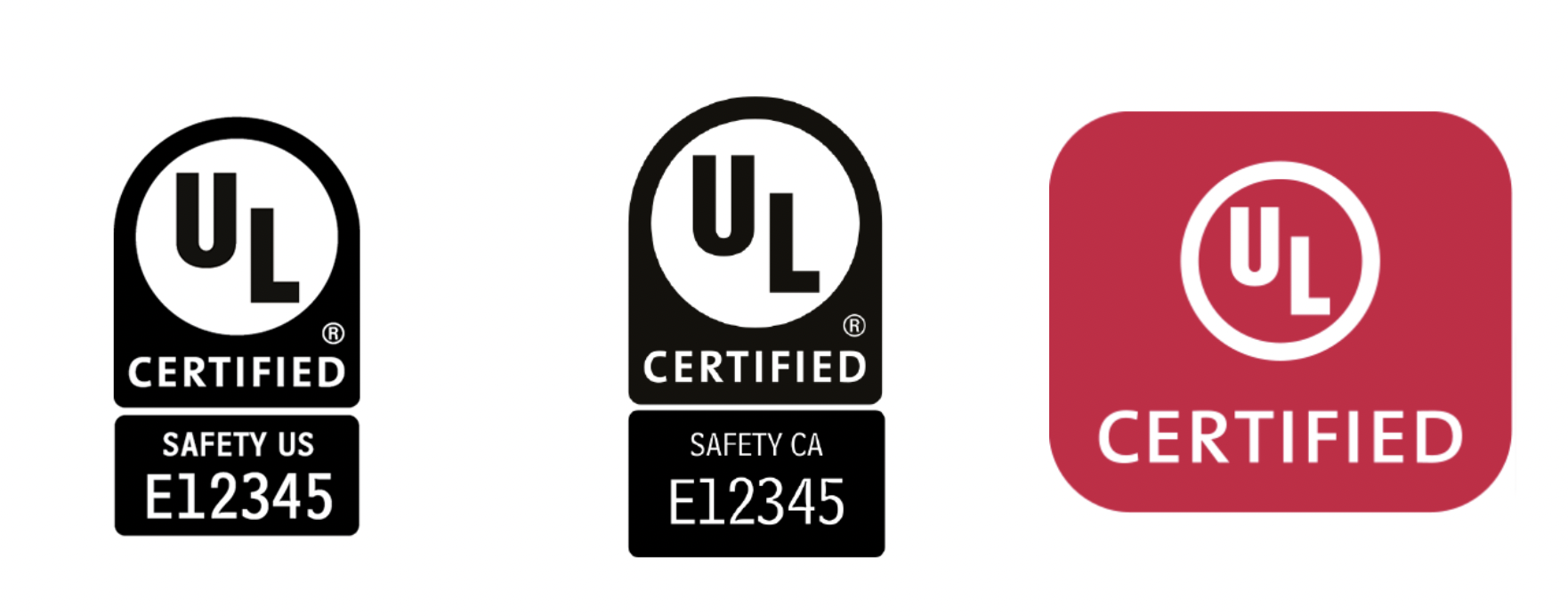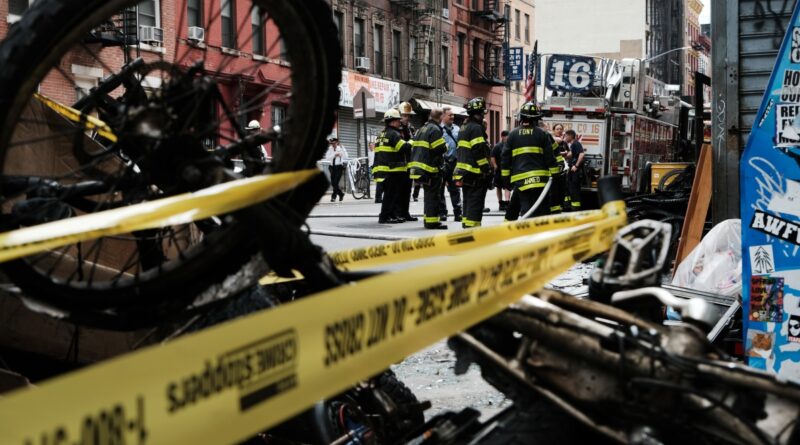Everything you need to know about e-bike battery fires
The e-bike revolution started with the pandemic and has been hailed as the answer to everything from traffic congestion to greenhouse gas emissions to fitness to depression. Indeed, it has the potential to spark real change, but there’s a deadlier side that is putting off some consumers.
We’ve all seen the headlines over the last couple of years. “Mom and two kids killed in fire caused by e-bike battery”; “4 dead, 2 critically injured in NYC e-bike store fire”; “FDNY says e-bike fires on pace to double this year.”
The prevalence of warnings about fires sparked by e-bikes and other light electric vehicles is in stark contrast to the current urban zeitgeist touting electric micromobility as the answer to creating safer streets, more efficient transportation and greener cities. So which is it? Are e-bikes and e-scooters going to kill us all in a lithium-induced blaze? Or will they save the world by converting would-be drivers to micromobility users?
Amid the hype and the hellfire, there’s been a lot of confusion around what types of vehicles are at risk of starting a fire, why lithium battery fires are so prevalent and so deadly, how to stay safe and what governments are doing to alleviate the risk as electric bikes and scooters take hold.
The bad news is that e-bike, e-scooter and e-moped battery fires aren’t going away anytime soon. The good news is that we can stop the spread by raising awareness about why they happen and how to avoid them.
Why do battery fires happen?
A man rides an e-bike through Times Square on February 21, 2023, in New York City. New York City Fire Commissioner Laura Kavanagh has called upon the Consumer Product Safety Commission to take action and help prevent what it calls sub-standard lithium-ion batteries after NYC experienced hundreds of e-bike and e-scooter battery fires. Image Credits: Leonardo Munoz / VIEWpress via Getty Images
There’s a chemical and a practical answer to this question. The chemical answer is that lithium-ion cells undergo a process called thermal runway, which results in a sharp increase of battery cell temperature and pressure, accompanied by the release of flammable gas. The flammable gas can ignite from the battery’s high temperature, resulting in a quick fire that’s hard to put out and emits toxic fumes.
What causes this release of flammable gas and the high battery heat? That answer varies, but there is some consensus.
Experts who spoke to TechCrunch say cheap e-bikes and low-quality batteries — often imported from China — are more likely to explode due to a lower-quality manufacturing process. If battery companies cut corners or use cheap materials, there’s more likely to be a defect that can lead the cells to expand and bulge, according to Leo Raudys, president and CEO of Call2Recycle, a nonprofit battery-recycling program. If they bulge, they can burst, which can also cause thermal runway.
“You just have to remember, you get what you pay for,” Raudys told TechCrunch. “These batteries are highly engineered devices, and if you’re only spending a couple hundred bucks on a battery, you’re probably getting one that’s cutting corners in a number of different places.”
In New York City, where food delivery workers rely on e-bikes to do their jobs, fires have been increasing at a startling rate — doubling each year from 2020 to 2022, according to Fire Department of New York data. As of July 3, 2023, there have been 114 investigations into lithium ion fires, 74 injuries and 13 deaths. That’s 13 deaths this year as a result of lithium batteries, compared to six in 2022 and four in 2021. While the FDNY doesn’t break down their stats into what types of devices caused the fires, 80 of the fires occurred in structures like homes, buildings and offices.
Many have speculated that many of the fires happened because so-called deliveristas — gig delivery workers with low incomes — have purchased cheap vehicles online or secondhand in order to do their jobs. Not only are those bikes and batteries off to a bad start already by dint of being cheap, but they’re also put through their paces.
Deliveristas can ride up to 100 miles per day, according to workers who spoke to TechCrunch. If they ever crash their e-bike or drop it or damage the battery in any way, that can increase the likelihood of a battery explosion. Particularly if the worker, who is likely exhausted from a long day on the streets, leaves their battery to charge overnight while they sleep. Overcharging batteries can lead to overheating, which can ignite the aforementioned flammable gas in lithium batteries.
Even high-quality batteries have the potential to cause a fire if tampered with. George Kerchner, executive director of the Rechargeable Battery Association, an industry trade group, told TechCrunch refurbishing batteries or doing DIY modifications can lead to fires because tinkering could compromise the safety features a battery was built with.
How can I stay safe?

There are many variations of UL safety certification marks, but they typically look like one of the above. Image Credit: UL Solutions
Battery fires can happen to anyone, but there are a range of safety practices that you can follow to ensure good battery hygiene.
The most important thing you can do is purchase equipment with the Underwriters Laboratories mark, which will tell you that the product, including battery, motor and charger, has been safety tested and certified. Look for a “UL” in a circle. And remember, this goes for anything with lithium-ion batteries, not just electric micromobility vehicles.
Make sure to follow the manufacturer’s instructions for charging and storage, and always use the manufacturer’s cord and power adapter that’s made specifically for the device. And don’t use extension cords to charge because they change the level of electrical resistance.
Don’t charge your device under your pillow, on your bed or on a couch, and try not to overcharge your batteries (keep them between 10% and 80% if possible) or place them in direct sunlight. Wait for your battery to revert to room temperature before charging and to dry if it got wet in the rain. If possible, don’t ride e-bikes in temperatures below -5 degrees Fahrenheit.
If you can, charge them away from exits so that you can make a quick escape in the event of a fire.
If your battery overheats or you notice a strange smell, odd noise, change in the shape or color, or anything else that rings your alarm bells, take action. If it’s safe, move the device away from anything that can catch fire and call the police.
Disposing of batteries properly is also vital. Don’t put them in the trash or recycle them at home. Check out local battery recycling locations near you. Call2Recycle has a really user-friendly program with over 50 e-bike brands participating. Whether you bought your bike new or used, you can take your old battery to any participating bike shop and they’ll take care of recycling it for you.
And if you don’t have an e-bike but you live near a shop that sells or refurbishes them, keep an eye out. No one likes a snitch, but shops that are not storing, charging or disposing of batteries correctly have been the cause of a few fires, and New Yorkers are reporting them.
In New York City in June, a fire started at an e-bike store that ended up killing four people and critically injuring two others. A week later, as part of the FDNY’s crackdown on illegal batteries, the agency discovered a “ticking time bomb” of dozens of lithium-ion batteries at a different store in Lower Manhattan. The FDNY found multiple fire hazards, damaged batteries and overloaded power strips.
What about used e-bikes?
“Have it checked out. Make sure it’s roadworthy,” said Raudys. “I don’t think the risk necessarily goes up just because it’s used, but like anything, it’s buyer beware. So if you’re buying a bike that’s cheap, it’s got an old battery, it’s beat up or just got the battery replaced and you don’t recognize the manufacturer, think twice because the quality of the battery is paramount.”
Many reputable e-bike shops today can check your battery health for you, especially if you purchase a bike that’s run on Bosch’s connected e-bike system, of which there are many.
What is the government doing to keep you safe?

U.S. Representative Ritchie Torres, a Democrat who represents the South Bronx, proposed federal legislation on March 7 that would require the Consumer Product Safety Commission to establish a final consumer product safety standard for e-bikes and e-scooters to protect against the risk of fires. Image Credits: Getty Images
At the federal level, very little. But there’s hope.
A few bills have been introduced to Congress to regulate the import of uncertified and low-quality batteries, as well as to incentivize consumers to buy high-quality e-bikes.
A new bipartisan bill, called the Import Security and Fairness Act, would limit the import of unregulated e-bikes and batteries into the U.S.
Today, China and other countries can sell products directly to U.S. consumers without customs and border patrol inspections if the products are under $800. A sub-$800 e-bike is exactly the type of bike that’s more likely to have an uncertified battery or a poor battery management system. The legislation would strike the provision that allows for products under $800 to go unchecked.
Another proposed bill, introduced to the Senate in March, would require the Consumer Product Safety Commission to establish a final consumer product safety standard for e-bikes and e-scooters to protect against the risk of fires.
Finally, policymakers reintroduced the Electric Bicycle Incentive Kickstart for the Environment (E-BIKE) Act in March, a bill that would provide Americans with a federal rebate of up to $1,500 toward the purchase of an e-bike. If passed, this bill could help make quality e-bikes more accessible to lower-income Americans.
Crucially, only e-bikes with UL-certified batteries, or equivalently certified batteries, are eligible for tax credits.
The E-BIKE Act was originally introduced in 2021 as part of the Biden administration’s Build Back Better (BBB) Act, which passed the House of Representatives but didn’t clear the Senate. The Inflation Reduction Act (IRA), which is a negotiated version of the BBB, did pass and was signed into law in August 2022. The E-BIKE Act, however, was left out of the bill’s language.
Note that the IRA does provide Americans with tax credits of up to $7,500 to incentivize the purchase of electric cars, a decidedly less green transportation option.
The federal government also gave New York City, the epicenter of battery fires, a $25 million emergency grant to fund the installation of 170 micromobility charging and storage stations across 50 locations. The goal is to provide deliveristas safe places to recharge their batteries.
NYC also issued a ban on the sale of non-UL certified batteries, but experts say that will be hard to enforce.
Some say support for safe charging practices and access to high-quality batteries shouldn’t fall only on the government, but also on app-based gig companies like Uber Eats, Grubhub and DoorDash. In cities like New York, deliveristas on e-bikes are the backbone of those businesses.
“An e-bike with a battery costs $1,600 to $1,700 or more,” William Medina, a member of Los Deliveristas Unidos, a collective of New York City’s delivery workers, told TechCrunch. “These are operating costs that the worker is incurring. He is assuming 100% of the cost of machinery in order to work, and the apps don’t do anything. They should be responsible to help us in some way.”
Everything you need to know about e-bike battery fires by Rebecca Bellan originally published on TechCrunch





